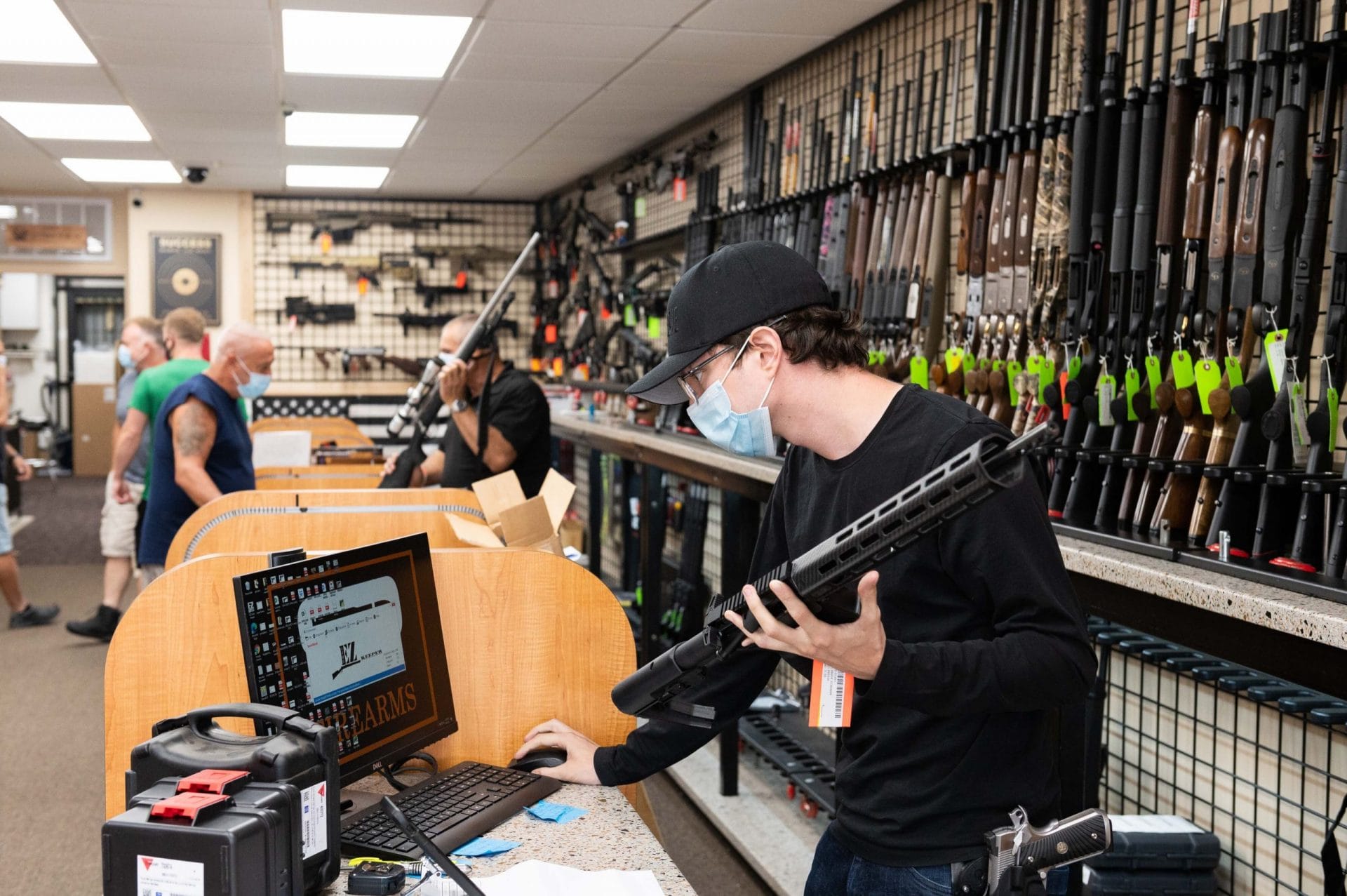
Guns Sales Continue Surging, Creating Problems for Public Safety
Gun sales have been on the rise for most of 2020, and new data shows that this trend is not letting up.
In November, 3.6 million firearm background checks were conducted through the FBI’s National Instant Criminal Background Check System (NICS). That translates to an estimated two million guns sold—an increase of 48% over November of last year.
November 2020 broke other sales records, with last month showing some of the highest recorded dates and weeks of NICS checks ever. Black Friday saw 186,645 NICS checks—the fourth highest day on record. To date, three of the five highest NICS checks days ever happened in 2020.
In total, it’s estimated that 17.4 million guns have been sold between March and November 2020—81% more than the number of estimated guns sold over the same period last year.
What’s Driving the Surge?
Initially, spikes in gun purchases seemed to be motivated by panic buyers who were concerned about a breakdown of public order in the early days of the pandemic. Some people even claimed to be buying guns to protect their homes and families from breaks-in perpetrated by people desperate for supplies. Early surveys indicate that many of these people were new firearm owners.
However, gun sales spikes in the summer and fall months may have been driven by increased concerns about violence and personal safety, both due to unrest over police violence and election-related violence worries.
While these times are unprecedented and difficult for many Americans, the evidence is clear that in most cases, panic buying guns creates—rather than reduces—risk.
More Guns, More Gun Violence
Previous spikes in gun purchases, such as those following mass shootings and political elections, have been associated with increased gun violence. For example, research has found that the surge in gun sales after the 2012 presidential election and Sandy Hook shooting were associated with increases in firearm injuries and unintentional child gun deaths.
Alarmingly, the pandemic has already heightened many risk factors for gun violence, even before panic gun buying is factored in. COVID-19 has devastated our economy, exacerbating poverty and unemployment, which we know elevates risk for community and domestic violence. Additionally, the response to the pandemic has exhausted public resources and institutions, such as social workers and hospitals, that play a critical role in responding to gun violence surges.

Guns are the most common method of suicide
Source
Centers for Disease Control and Prevention, National Center for Health Statistics. Underlying Cause of Death 2018-2021 on CDC WONDER Online Database, released in 2023. Data are from the Multiple Cause of Death Files, 2018-2021, as compiled from data provided by the 57 vital statistics jurisdictions through the Vital Statistics Cooperative Program. Accessed at http://wonder.cdc.gov/ucd-icd10.html on Feb 9, 2022. Calculations were based on four years of the most recently available data: 2018 to 2021.
Financial insecurity is also a major risk factor for gun suicide. Previous research found that roughly 4,750 suicides in the United States between 2007 and 2010 were directly associated with the economic recession. Social isolation and anxiety about pandemic may further amplify this risk.
Throughout the pandemic, Americans have been called on to take precautions like social distancing and wearing masks to prevent the spread of COVID-19. But we must remember that the pandemic isn’t the only crisis our country is facing.
Just like we all must do our part to save lives from this pandemic, we all have a role to play in preventing gun violence. Gun owners should take steps to prevent unintentional gun violence and suicide by safely storing firearms and making sure they are inaccessible to children and individuals at increased risk of suicide. And we all should demand that our leaders take steps to pass laws and invest in proven programs that will help reduce gun violence and keep us all safe.
GET THE FACTS
Gun violence is a complex problem, and while there’s no one-size-fits-all solution, we must act. Our reports bring you the latest cutting-edge research and analysis about strategies to end our country’s gun violence crisis at every level.
Learn More
